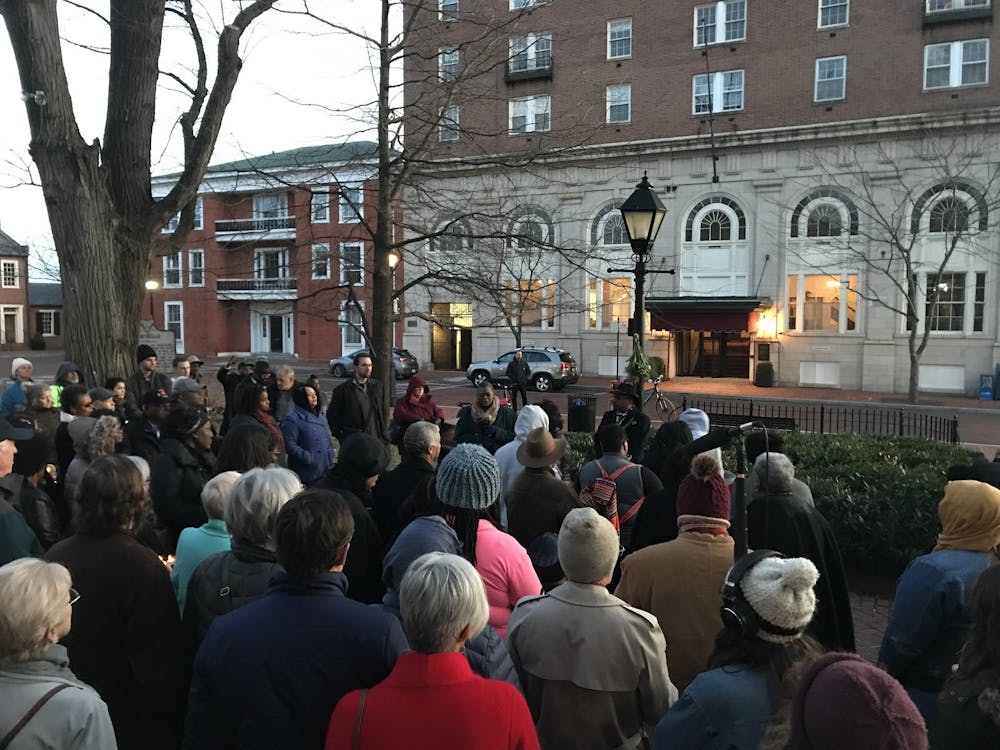Dozens of community members gathered in Court Square Sunday night for Beloved Community CVille’s slave auction block vigil to honor the enslaved people of Charlottesville, many of whom were sold into bondage outside the courthouse.
It was a solemn beginning for a week of programming celebrating Charlottesville’s first official Liberation and Freedom Day, commemorated March 3, the anniversary of the Union troops’ arrival that began the emancipation of more than 14,000 enslaved people in 1865. Events continue through March 8.
The vigil took place in the shadow of the auction block marker’s theft by a local white activist. The theft was not the focus of the evening, but event organizer Deacon Don Gathers told The Cavalier Daily in an interview that he hoped the week’s events would energize an effort to replace the plaque with a monument commemorating Charlottesville’s enslaved population.
“It is not an accident that there are tall Confederate statues across the street, while this plaque is buried in the ground,” Gathers said. “That power imbalance must be addressed.”
The vigil included a short walking tour around the square, with descendants of the enslaved speaking, praying and singing at each station.
When the procession stopped at 300 Court Square, Myra Anderson, a sixth-generation descendant of the Hern family, who were enslaved at Monticello by Thomas Jefferson, read each of the names of the 33 people who were sold on that spot to pay Jefferson’s debts after his death in 1829. Anderson said the sale was the largest in Charlottesville’s recorded history, and included two of her ancestors.
At the former site of the auction block, Cauline Yates, a descendant of Sally Hemings’s family, read an 1852 letter that an enslaved woman named Maria Perkins wrote to her husband, Richard, telling him that she would be sold to a slave trader unless his slaveholder could purchase her.
A 101-year-old formerly enslaved Charlottesville man’s recorded testimony was also projected throughout the square. The crowd was silent when the recording ended.
Then a man removed his hat and started to sing. His voice is included here:







